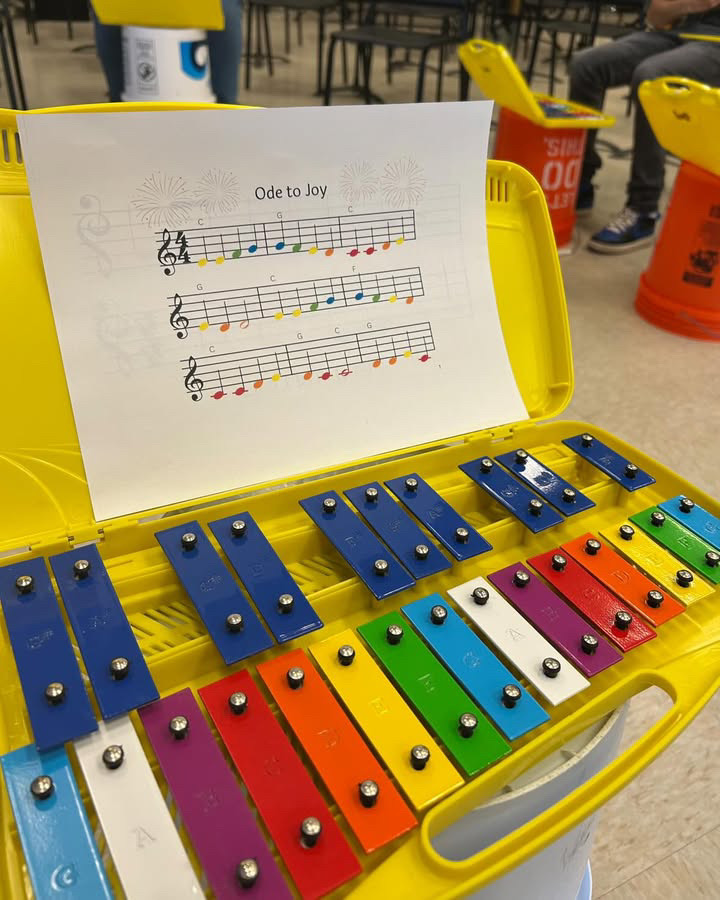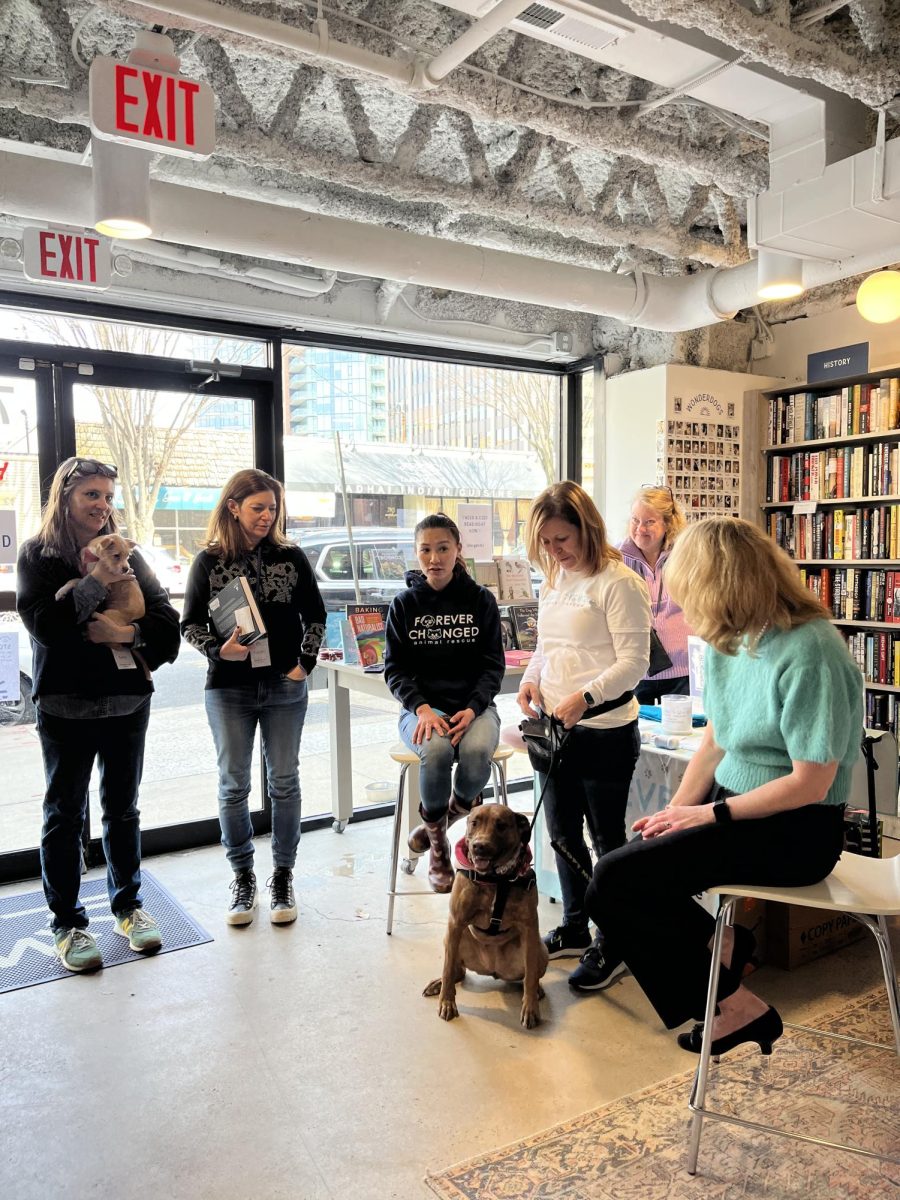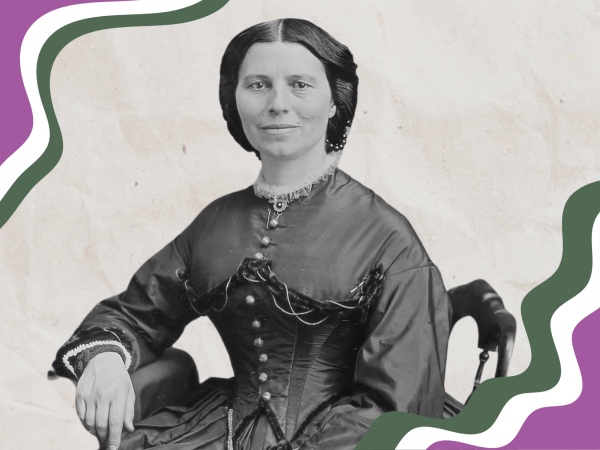How the Rubell Museum changed my view of contemporary art
‘Another Man’s Cloth,’ by artist El Anatsui
September 7, 2023
Thousands of liquor bottle labels and shards piled up, each intricately woven and sculptured within a textile. Crumpled and folded metal pieces sourced a recycling station from sculptor El Anatsui’s home in Nigeria covered the textured work — and just to the right, the author’s note where he described how he used bottle caps to allude to the consequences of trade, consumption and waste in Ghana after British colonization.
At another time, I would have just glanced at the artwork, observing it for no more than 30 seconds, just as I’ve done at prior art museum visits. However, as someone who isn’t especially interested in art, I was astonished by the contemporary art at D.C.’s Rubell Museum.
I first noticed the steel texture of the bottle cap art, but after learning the powerful message behind the work, my entire view on contemporary art quickly changed. I realized that the beauty of the artwork is just the surface of a uniquely powerful message offered by each piece. That same relationship I found throughout the Rubell’s exhibits.
Before visiting the Rubell Museum, I had a narrow view of what art was, limited to traditional paintings and sculptures. Walking through Rubell’s exhibits with displays on social change, personal stories and past hardships made me realize how impactful art can be not in the past, but right now. Whether the exhibit symbolized women’s resilience and sexuality or showcased the importance of Jazz in Black life, every theme forced me to consider the issues that society has faced throughout history and continues to face.
One exhibit displayed models of different interpretations of what America is built on, reimagining parts of American history. Producing a full-scale model of an 18th-century wagon named “Chariot (The Day After The End of Days),” artist Matthew Day Jackson takes what was considered a positive symbol of national growth and forces viewers to consider death, war and violence as consequences of the westward expansion. He displays 20 state flags on the wagon cover to convey the scale of the expansion and highlight the motivations of travelers.
Upon first inspection, it merely looked like a life-sized and functional wooden wagon with beautiful intricate layers, but after understanding the artist’s message, it forced me to think about American society critically. Unlike your typical two-dimensional painting of westward expansion, the massive wagon directly inserted me into the journey. The actual social consequences of westward expansion shine through in this artist’s work, digging deeper than just the surface of the commonly known dangers.
One exhibit initially made me feel uncomfortable, displaying nude images of women profusely and violently bleeding out. “Woman’s Psyche” created by Juanita McNeely depicts many themes about women’s sexuality, menstruation myths, the violence of birth and abortion. At the age of 15, McNeely was diagnosed with cancer while she was pregnant, but was unable to get an abortion because it was illegal at that time. All-male doctors decided her fate, but she fortunately survived and recounted her experience to others in her artwork.
I would never have experienced such disturbing and violent displays at any other art museum. This blunt imagery allowed me to recognize that I should be comfortable in my own body and that life in all forms should be celebrated through art, even when the topic is unsettling. With so much intensity and confidence, it is hard to hold your gaze on the women McNeely painted. Depicting an extreme level of despair, her collection forces visitors to reflect on their views of death. In the days Post-Roe, it remains common to question a woman’s psyche, and when McNeely was desperately trying to get help, people minimized her. She felt silenced at that time, so she highlights in her artwork how uncomfortable society is when talking about women’s bodies.
Unlike the more traditional art museums in D.C., the Rubell, which also has a location in Miami, showcases the art of our time and our world. Exhibits contain works created by living artists and provide a platform for emerging artists to express themselves. Each young artist expresses themselves in a unique and creative way, making the exhibits even more compelling. New artists push boundaries and experiment with interesting techniques like painting with coffee or recreating their own textiles. Through more than 190 pieces of art by 50 artists, differing perspectives challenge visitors and expose them to unspoken societal expectations.
Every exhibit, which used to be just classrooms in 2006, brings a diversity of voices and perspectives to their masterpieces. New artists push boundaries and experiment with interesting techniques like painting with coffee or recreating their own textiles. Through more than 190 pieces of art by 50 artists, visitors are challenged by differing perspectives and exposed to unspoken societal expectations.
The Rubell Museum taught me to approach art with an open mind and willingness to push myself past the surface-level meaning and into a deeper, more thought-provoking message. Whether the art is a giant sculptural textile covered in history or a 3D painting calling for social change, contemporary art is an art form that anyone can enjoy. Next time you intend to go to a museum in D.C., keep in mind present-day, contemporary art exhibits to push yourself to expand your knowledge.










